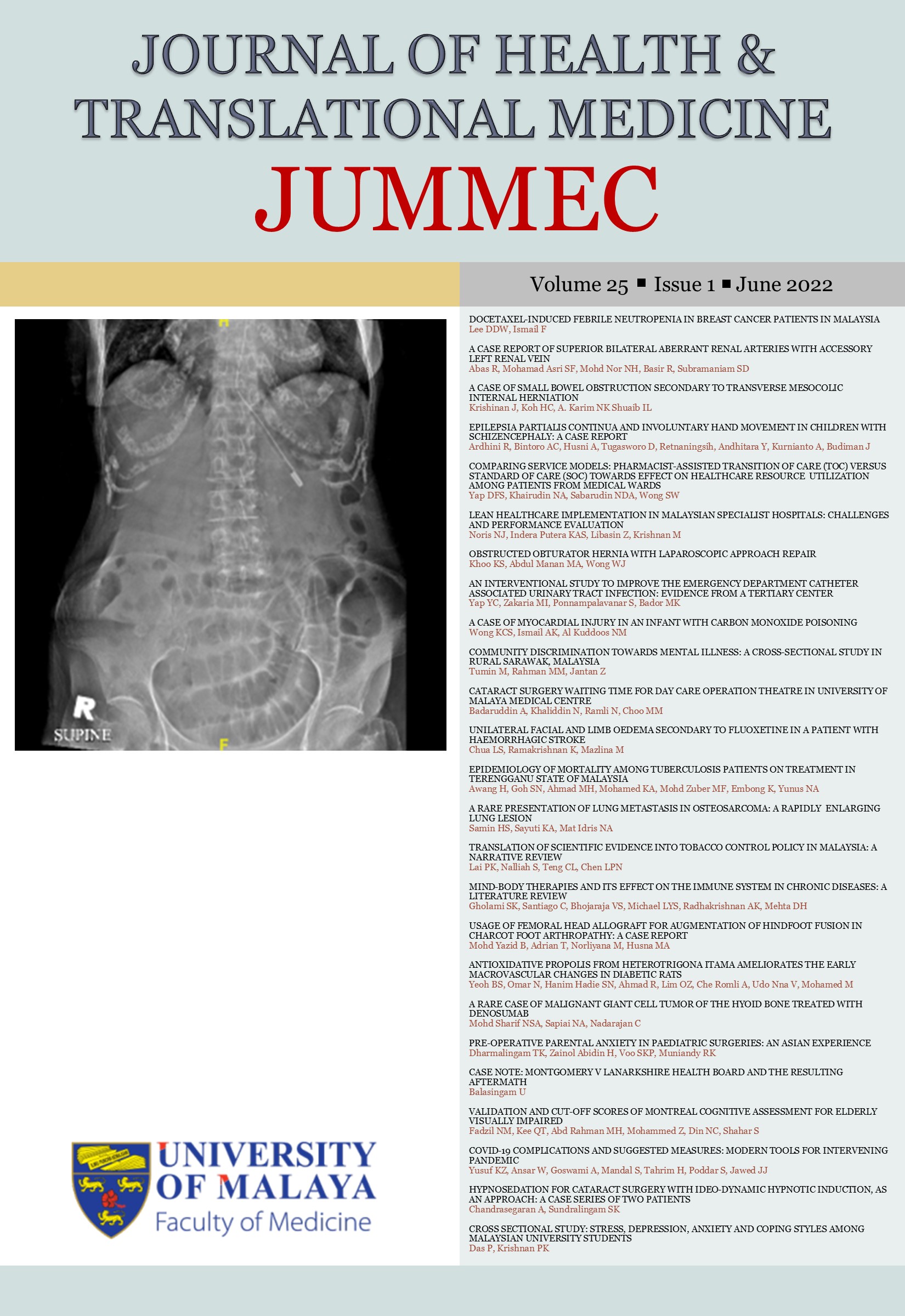ANTIOXIDATIVE PROPOLIS FROM HETEROTRIGONA ITAMA AMELIORATES THE EARLY MACROVASCULAR CHANGES IN DIABETIC RATS
Received 2021-01-03; Accepted 2021-09-23; Published 2021-11-22
DOI:
https://doi.org/10.22452/jummec.vol25no1.18Keywords:
Stingless bee propolis, Heterotrigona itama, antioxidant, diabetic macroangiopathy, antiatherogenic effectAbstract
Background: Oxidative damage culminates in diabetic macrovascular complication. Ethanolic extract propolis of Heterotrigona itama exhibits antioxidative, antidiabetic and cardioprotective properties. However, vasoprotective activity has yet to be reported. This research was designed to investigate the effects of the ethanolic extract of propolis on histology and oxidative stress parameters in the aorta of diabetic rats.
Methods: Raw propolis from Kelantan bee farm was ground, dissolved and distilled with ethanol into crude extract. Adult male Sprague Dawley rats were divided into four groups, n=8/group: normoglycemia (NG), untreated diabetes (DM), metformin-treated diabetes (DM+M, 300 mg/kg/day) and propolis-treated diabetes (DM+P, 300 mg/kg/day). A single injection of intraperitoneal streptozotocin (60 mg/kg) was used to induce diabetes mellitus, followed by a four-week treatment, via oral gavage, administered immediately after successful diabetes-induction with evidence of hyperglycaemia. Both NG and DM groups were given one millilitre of the vehicle. Rats were sacrificed at the end of the experiment; blood was collected for determination of serum lipid profile; the aorta was fixed and processed for histomorphology and histomorphometry evaluation; aortic tissue homogenate assay for oxidant/antioxidant activities. Differences in the parameters between groups were analysed using one-way analysis of variance (ANOVA) with post-hoc adjustment.
Results: Propolis treatment elevated the high-density lipoprotein level and suppressed protein oxidation in diabetic rats. Furthermore, propolis halted the thickening of tunica intima and aberrant proliferation of vascular smooth muscle cells in tunica media.
Conclusion: In conclusion, this proof-of-concept study indicated the potential of propolis as a vasoprotective agent against the early pathogenesis of diabetic macroangiopathy through anti-oxidative and anti- hyperglycaemic activities.
Downloads
Downloads
Published
Issue
Section
License
All authors agree that the article, if editorially accepted for publication, shall be licensed under the Creative Commons Attribution License 4.0 to allow others to freely access, copy and use research provided the author is correctly attributed, unless otherwise stated. All articles are available online without charge or other barriers to access. However, anyone wishing to reproduce large quantities of an article (250+) should inform the publisher. Any opinion expressed in the articles are those of the authors and do not reflect that of the University of Malaya, 50603 Kuala Lumpur, Malaysia.


